California divergence
Top two Golden State fisheries offer different, plentiful bass-fishing opportunities
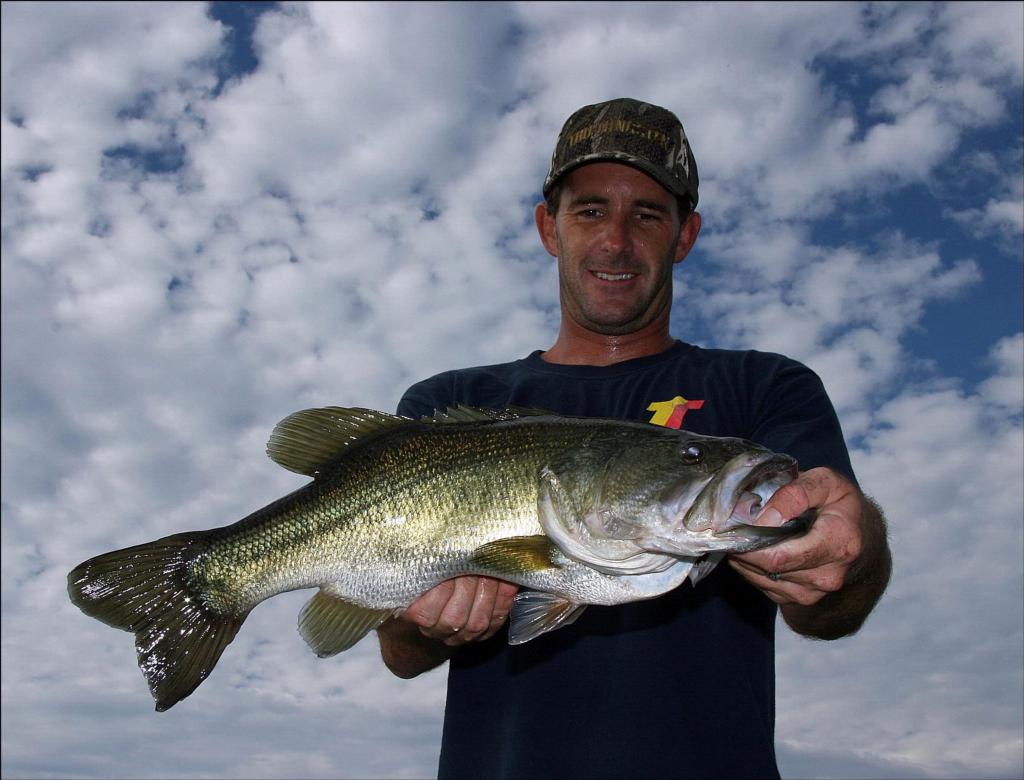
They’re connected only by their rankings as the top western bass waters in the nation, but despite completely different profiles, Clear Lake and the California Delta team up to offer a one-two punch of Golden State bass potential in relatively close proximity.
Situated just east of the Mayacamas Mountains in California’s fertile Wine Country, Clear Lake holds great numbers of stocked Florida-strain largemouths that make this natural water body numero uno among western fisheries. The Cal Delta makes a close runner up, with the opportunities presented by its sheer vastness balanced by the often-challenging tidal environment.
Convenient facilities and straightforward access points have brought several tournaments, including many FLW events, to both fisheries. Here’s a look at what to expect from each area.
Clear favorite
Covering 43,785 surface acres Clear Lake stretches 19 miles long and eight miles across at its widest point. California’s largest natural lake, its maximum depth is 60 feet, but the average is about 28. Within approximately 100 miles of shoreline, the jewel of Lake County holds abundant crawfish, perch, silverside minnows, threadfin shad and a hefty forage fish called “hitch” to fuel a strong bass population.
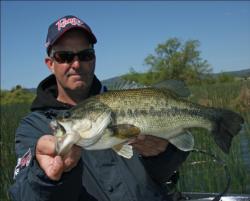 “Clear Lake is without a doubt the bass capital of the west, with the Delta a close second,” said Ranger Boat dealer Scott Green of Santa Rosa. “Tournament weights prove that this fishery is alive and well 12 months a year. It’s common to catch 20 to 30 pounds on any given day and in the pre-spawn. If you do not have 25-plus pounds, you are not in the game.”
“Clear Lake is without a doubt the bass capital of the west, with the Delta a close second,” said Ranger Boat dealer Scott Green of Santa Rosa. “Tournament weights prove that this fishery is alive and well 12 months a year. It’s common to catch 20 to 30 pounds on any given day and in the pre-spawn. If you do not have 25-plus pounds, you are not in the game.”
At 1,326 feet above sea level, Clear Lake sits about two and a half hours northwest of Sacramento. The valley in which the lake resides was formed approximately three million years ago by geological shifting, with the lake beginning as a series of oxbows scattered along what is now Cache Creek. When the valley deepened and melting snow filled the chasm, Clear Lake was born.
Essentially two main bodies joined by narrow straits, the lake produces bass in its shallow north end relating to grass, tules and primrose. The south end fish relate to rocks with scattered tules, ledges, deep water docks in depths of up to 35 feet.
Clear Lake’s north end extends southeast through The Narrows, around the Buckingham peninsula and into its south end, comprising both the eastern and southern arms. Cache Creek at the south end, along with Kelsey and Adobe creeks to the northwest and Rodman Slough (north) offer prime bass spawning habitat. Tules also host spawners and flipping or pitching plastics into gaps in the vegetation will anger anyone bedding there.
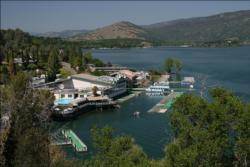 Spring offers the best shot at boating a trophy and Green said the opportunities range practically throughout the entire lake.
Spring offers the best shot at boating a trophy and Green said the opportunities range practically throughout the entire lake.
“The good news about Clear Lake is you fish for a big fish everywhere you go. The best time for numbers of bass is the summer. It’s common to catch over 100 bass a day from 2 to 7 pounds on a jig. Target the south end rock piles and ledges and when you find them it’s lights out.”
Green said the top spring baits are “just about everything you throw at (the fish.).” Flipping jigs, Brush Hogs and the like produces plenty of bites, as do wacky or unweighted Texas-rigged Senkos. For the homerun, hefty swimbaits like those made by Huddleston, Osprey and Mission Fish fool many a big spring female, especially when pulled past creek mouth tules.
Summer brings great topwater action with Snag Proof Frogs in yellow-headed blackbird color, Super Spooks and wakebaits. Jigging deeper rock piles is another deadly summer pattern. Fall sees a downturn in numbers, but quality fish often reward diligence. Green said this is a good time for topwaters, jigs and rattlebaits like the Lucky Craft LV500. Live baiting with jumbo minnows under floats dominates the winter effort, but jigs, worms and spoons will produce on deeper structure.
Complementing Clear Lake’s fantastic fishery is the area’s amazing scenery and wildlife. On the water, yellow-headed blackbirds perch among the tules, while blue herons patrol the shorelines and ospreys and bald eagles hunt from above. Surrounding forests hold wild turkeys, California quail, red tail hawks, Steller’s jays and woodpeckers. Black bears, mountain lions, bobcats, elk and blacktail deer roam wooded areas, while purple lupine blossoms adorn fields and wild California poppies – the state flower – burst with orange brilliance from the most unlikely of roadside perches.
Delta drawn
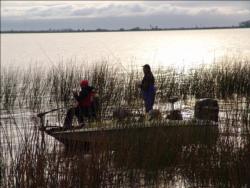 It’s probably neither fair, nor accurate to summarize the Cal Delta in one word, but “wow” is a good start. Hughson, Calif. pro Ish Monroe, who won last fall’s FLW Series event on the Delta points to the region’s 12-month growing season, plus abundant forage as key ingredients. Predator and prey lack not for range, as the Delta region covers some 600,000 acres stretching roughly from the Sacramento, west to San Francisco Bay and then South to about Manteca.
It’s probably neither fair, nor accurate to summarize the Cal Delta in one word, but “wow” is a good start. Hughson, Calif. pro Ish Monroe, who won last fall’s FLW Series event on the Delta points to the region’s 12-month growing season, plus abundant forage as key ingredients. Predator and prey lack not for range, as the Delta region covers some 600,000 acres stretching roughly from the Sacramento, west to San Francisco Bay and then South to about Manteca.
“The size of the delta is nuts,” said Matt Newman of Agoura Hills, Calif. “I have been fishing there quite a bit for the last five years and I would still get lost if I didn’t have GPS.”
Feeding this region is a quartet of major rivers (the Sacramento, American, Mokelumne and San Joaquin) along with dozens of lesser streams. Habitat includes dense grass beds, assorted aquatic weeds, large tule berms and hundreds of miles of rip rap shoreline. No doubt, this estuarine realm fraught with leeward shores and tucked-away points can be simply incredible – particularly when spring finds thousands of giant female bass invading the shallows to release the next generation of largemouths, also of Floridian ancestry.
“The best part of the Delta is the size of the fish,” Newman said. “The average fish is about 4 pounds, but you will need 30-pound bags to do well there in a spring tournament. It’s not uncommon to see several teen fish weighed in a tournament.”
Monroe said anglers won’t go wrong with dependable areas like Franks Tract and Little Mandeville Island, but with a 14-pound Delta beast to his credit, Monroe said the potential is broadly dispersed. “The whole Delta is productive – you can win a tournament anywhere (in this region).”
The key, he said, is understanding and leveraging the daily ebb and flow of the tides. Indeed, tides present a feast-or-famine scenario that blesses and befuddles anglers alike.
“You have to fish the tides; that’s very important. You can fish all day and have nothing then hit a 30-minute window and load the boat. The tide always affects my strategy.”
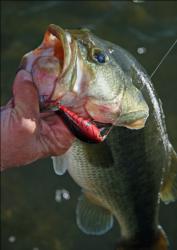 Newman agrees, adding: “I have had areas where you cannot get a nibble until the tide switches. When it does you can put 30 pounds in the boat in 10 minutes. Understanding the tides will save a lot of wasted time and heartache. My advice to someone new to the Delta is to pick an area and learn it. This will help you understand the tides and how the fish relate to certain cover during different tides.”
Newman agrees, adding: “I have had areas where you cannot get a nibble until the tide switches. When it does you can put 30 pounds in the boat in 10 minutes. Understanding the tides will save a lot of wasted time and heartache. My advice to someone new to the Delta is to pick an area and learn it. This will help you understand the tides and how the fish relate to certain cover during different tides.”
A common practice, known as “chasing the tide” finds Delta anglers hopping up the coast with incoming water, or down the line with a falling cycle to stay on top of a productive pattern. For example: Maybe you find the fish stacking on rocky points an hour into the falling tide. Fish your top spot until the action fades, move a few miles south and by then, the progressing tide should be reaching a similar stage on similar spots. For rising or falling tides, remember that all the water in the Delta doesn’t move at once. Tides are gradual occurrences that move symmetrically throughout a region. Time it right and you can often keep a good Delta bite rolling for a couple of hours.
One thing newcomers won’t have to worry about is finding something to throw. Newman, who has pulled toads up to 12 pounds from the Delta, lauded the region’s tactical diversity.
“There are very few places in the West (in which) you can use any fishing method and do well. In the Delta, you can dropshot 6-pound line in clear water or flip jigs with 65-pound braid in the same day.”
Monroe sticks with a quintet of Delta baits that he’ll fish year-round: Sweet Beaver (California 420 and watermelon red flake) Texas rigged with ¼- to 1 1/2-ounce Tru-Tungsten bullet weights, Tru-Tungsten Tru-Life swimbait, shallow running crankbaits (red), Snag Proof Bobby’s Perfect Frog (white), and a lipless crankbait (red). Chatterbaits get it done on the Delta too, as Brett Hite proved in his 2008 FLW Series win.
In summation, both Clear Lake and the Cal Delta offer year-round opportunity with astounding numbers of quality fish and legitimate trophy bass in no short supply. Lake fish will typically hug their favored areas, while tidal bass are making big moves at least twice a day. Nevertheless, both areas offer first-timers a better-than-average shot at stumbling into something awesome.